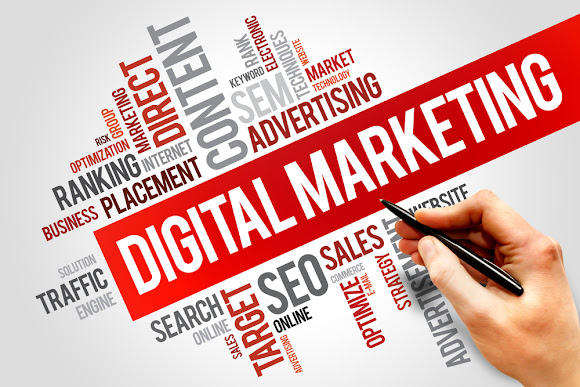The Evolution of Digital Marketing: Trends and Technologies Shaping the Industry
Digital marketing has seen relentless innovation over the past decade, evolving data-driven strategies, disruptive channels and cutting edge tactics. As technology progresses, it introduces new possibilities for brands to understand and interact with always-connected audiences. These dynamic forces shape emerging trends and the future landscape of digital marketing.
Personalization Powers Relevance at Scale
Connecting individually with customers signals brands inherently understand their needs. Segmentation has advanced from basic demographics towards more granular psychographic and behavioral attributes for tailored messaging. Artificial intelligence drives the next level - technologies like machine learning interpret multiple data signals from CRM systems, web analytics, social media and more to “learn” audiences and predict preferences. From customized email content to individualized product recommendations, savvy automation enables scalable personalization.
The Internet of Things Expands Audience Breadth
The Internet of Things (IoT) marks a proliferation of everyday consumer products, appliances and vehicles connecting people across environments. Over 20 billion devices currently comprise the IoT with projections of 75 billion by 2025. These connected “things” represent touchpoints to gather behavioral data and deliver contextual marketing. Imagine a smart refrigerator triggering customized grocery discount alerts or a vehicle infotainment system providing audio ads based on commute routes. Brands who capitalize on emerging ambient interactions through the IoT tap new physical-world influence.
Advanced Analytics Close the Measurement Gap
Sophisticated analytics reduce guessing by revealing marketing effectiveness and optimizing activities for better performance. Extending beyond simply monitoring web traffic or counting social media followers, multi-channel attribution can finally quantify leads and sales driven across online and offline channels. Machine learning modeling determines ideal customer profiles for targeting. Sentiment analysis parses emotions within social conversations and campaign feedback. Predictive analytics even forecast future behaviors and trends for smarter budget decisions to achieve ROI. Holistic data translates digital efforts into hard business value.
Augmented and Virtual Reality Immerse Audiences
Leading-edge augmented reality (AR) and virtual reality (VR) technologies move beyond screens to create lifelike simulated environments driven by 3D models and 360 degree images. Smartphone AR got early traction with apps like Pokémon GO and Snapchat leading the way for more advanced implementations as 5G cellular networks spread. VR adoption also accelerates with Oculus Rift, HTC Vive and PlayStation VR headsets hitting consumer price ranges - extending interactive brand adventures. As costs lower and 5G removes latency issues, marketers gain new canvases to pioneer exciting immersive worlds that captivate consumer attention.
Conversational Bots Deepen Engagement
Chatbots simulate interactive conversations to provide helpful information or services using NLP-interpreted text or voice input. Their underlying artificial intelligence draws insights from audience data to deliver personalized exchanges. Chatbot anchors native to messaging apps like Facebook Messenger and Whatsapp along with voice counterparts on smart speakers like Amazon Alexa equip brands with versatility in reaching audiences conversationally. Utility exists across use cases from commerce interactions to technical support and contextual notifications. Friendly bots feel responsive and in-the-moment, driving ongoing rapport and relationships.
Influencer Marketing Channels Authenticity
The social media rise enables talented content creators to emerge as influencers over their niched followers. Instead of brands blasting outward-facing ads, influencer marketing fosters content that organically engages audiences. Strategic campaigns pair aligned creators to showcase products naturally within videos, posts and stories. Their creative craft and intimate community connections generate trust to compel consumers. Marketers value influencer marketing for high returns from genuine connections and advocacy spreading through social word-of-mouth.
Shoppable Streaming Video Commerce Takes Off
Over two-thirds of retail brands already use video for online shopping guidance per Animoto. Streaming video increasingly merges commerce - think the interactive QVC but for digital platforms. During streams, influencers highlight featured products that viewers can directly click through to purchase from overlaid links without leaving the video. In China, Alibaba’s Taobao Live platform generated nearly $60 billion GMV in 2020 partly through shoppable live streams. Similarly, mobile commerce apps Shein and NTWRK built in-app live video shopping. The seamless path from discovery to transaction through shoppable streaming positions the format at the new retail forefront.
Next-Generation Content Goes Bite-Sized
Facing overload, shrinking attention spans now average under 8 seconds. Microcontent that distills messaging into compact formats suits audience inclinations. Short-form video platform TikTok popularized the trend towards more consumable content units with its musical 15-second videos. Brands leaned into new minimalist content frameworks from Twitter’s 280-character limit to the widespread “stories” format in apps like Instagram and Snapchat pioneering vertical full-screen images and video. Marketers must increasingly cater to rovering users through flexible design approaches, not expecting enduring immersion.
Everything Gets Shoppable with Visual Search
Upload an image to Google Lens or Pinterest Lens and let visual search show you where to buy what you see. Powerful computer vision and machine learning technology can now recognize objects, patterns, text and depictions to match with relevant content or items for sale online. As visual AI improves, it becomes invaluable for streamlining shopping - no more describing an item and scrolling pages of results. Social apps embed tools like Snapchat Scan to reveal related AR experiences, lenses and ecommerce links from snapping surroundings. Over 74 percent of millennials already leverage visual search to aid purchases. Simplifying the path from visual inspiration to transaction will define future retail.
From personalized experiences to immersive worlds, digital marketing rides each wave of technological change to reinvent tactics and maximize influence. Innovations in automation, analytics and connectivity open unforeseen channels for brands to capture greater mindshare across digitally-empowered audiences. By continually adapting strategies to leverage emerging capabilities, modern marketers maintain relevance amidst rapidly shifting consumer expectations for interaction.
.jpg)



Comments
Post a Comment